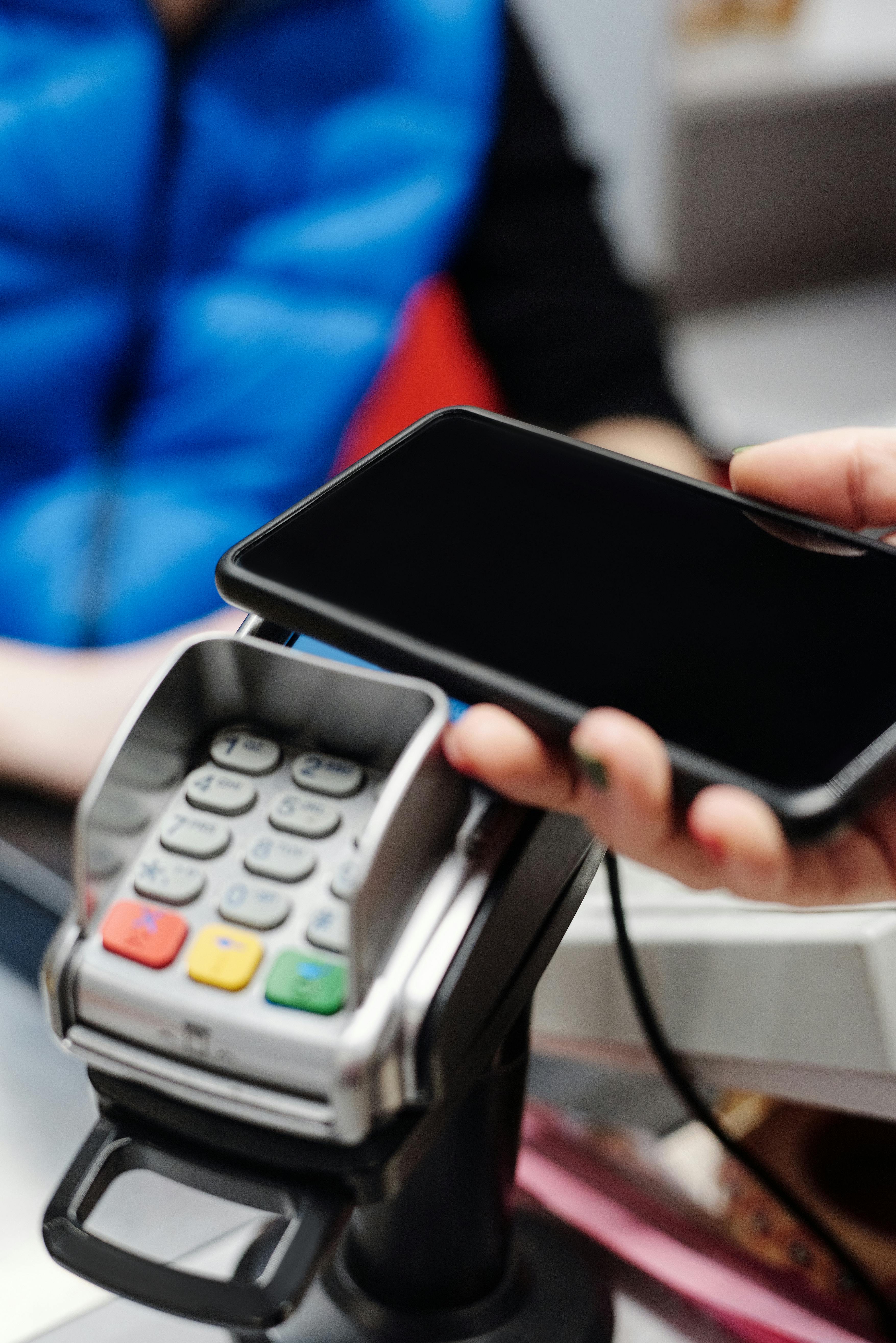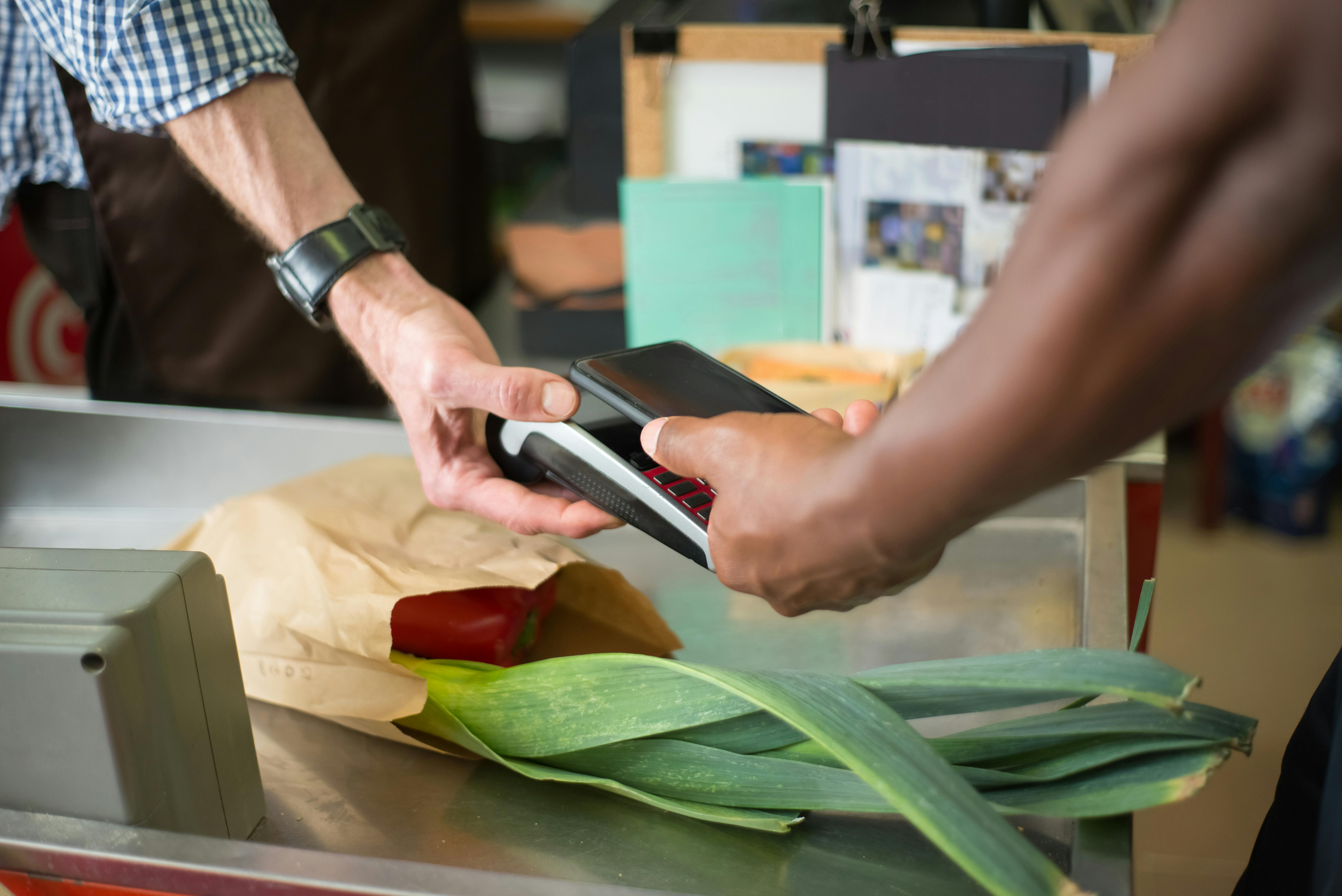Secure Online Payments: How Digital Wallets Work in Singapore
Have you ever stared warily at that “Pay Now” button, wondering if your card info could wind up somewhere it shouldn’t? These days—especially in Singapore—digital wallets seem to promise safe, nearly frictionless payments, but are they truly as secure as advertised? I’ve asked myself that repeatedly, particularly since mobile wallets began popping up at hawker stalls and even small shops across Tiong Bahru and Bedok back in 2019. What strikes me most now is how, just four years later, cash feels almost clumsy—a relic, really. Yet, every move toward digital payment in Singapore brings fresh security concerns. Seriously, anyone else get mildly paranoid the first time they used their phone to pay for kopi?
In my experience, digital wallets offer a seriously powerful blend of convenience and security—but only when you know how to use them wisely. This guide is for anyone living, working, or just shopping in Singapore who wants practical, actionable advice on using digital wallets for secure online payments. Whether you’re a rookie still clutching cash or a savvy professional comparing e-wallet security protocols, you’ll find something here. I’ll walk you through the different digital wallet options in Singapore, reveal real-world security best practices, share honest mistakes (yes, I once nearly paid twice for a bowl of laksa!), and answer every tough question skeptics have about payment apps. Let’s make sense of this fast-evolving fintech scene together.
Overview: Digital Wallets in Singapore
First off, digital wallets aren’t new—they’ve just become normal here much faster than anyone predicted. Back in the early days, you’d find people nervously fumbling with their phones, triple-checking passwords just to pay for Nasi Lemak at Old Airport Road. Fast forward to 2025, and Singapore leads Southeast Asia in secure digital wallet adoption, with over 80% of the population routinely using digital wallets for online purchases, hawker centre meals, and even utility payments1. It’s genuinely become a national pastime to tap and go.
Country Fact: Singapore is the first country in Asia to mandate e-payment interoperability between licensed digital wallet providers, streamlining both security measures and user convenience according to MAS guidelines issued in late 20232.
So, why is Singapore ahead? I’d say it’s a mix: strong tech infrastructure, government support for cashless payments, high smartphone penetration, and intense consumer demand for both convenience and security. MAS (Monetary Authority of Singapore) sets rigorous standards, but local innovation—think GrabPay, PayNow, DBS PayLah!, ShopeePay, FavePay—is what keeps the market competitive and user-focused3. Actually, let me clarify: government regulation prevents most wild experimentation, but the array of wallet features keeps evolving as consumers get more demanding and cyber risks morph.
Ever pause to wonder why digital wallet use exploded during the pandemic? It wasn’t just social distancing. From my perspective, the real push came when merchants realised (realize!) that cash was, for a moment, nearly useless, and the government made scanning and payment as easy as possible. Adoption surged—the numbers are bonkers4. Even Aunties in Clementi started using QR payments, and suddenly cash felt like a time capsule. Now, “digital wallet” means more than just Apple Pay or Google Pay; it covers a robust ecosystem of payment apps, banking integrations, and e-commerce platforms.
How Digital Wallets Work
Okay, let’s step back. What is a “digital wallet”? At its core, it’s a secure application on your phone, tablet, or computer that stores your payment info—credit cards, debit cards, bank accounts, and, in many cases, loyalty cards and e-cash vouchers. When you pay online or scan at a local store, the wallet encrypts your details and completes the transaction. Ever notice how payment is now a two-tap affair? The “magic” behind the scenes is heavy-duty encryption and secure servers.
Typically, a digital wallet in Singapore will use several security layers:
- Tokenization: Your card info gets replaced by a “token”—a temporary code used for payment.
- Biometric authentication: Face ID, fingerprint, or voice verification.
- Two-factor authentication: A password plus a one-time SMS code or app notification.
- Encryption (SSL/TLS): Scrambles your data so it can’t be read if intercepted.
What does this mean for users in Singapore? Well, honestly, it’s mostly invisible—but it’s crucial. I used to think biometrics felt a bit too sci-fi, but now that I’ve seen payment fraud rates plummet (with real numbers from MAS reports), I’m convinced. From a security perspective, digital wallets typically provide far more protection than traditional card entry. Still, not all wallets are created equal, and some banks offer stronger default protections and faster response to fraud than others5.
Key Insight:
Singapore’s regulatory focus on e-payment security, combined with consumer education campaigns since 2022, has led to a substantial decrease in payment-related cybercrime—though no system is absolutely foolproof.
Major Types of Digital Wallets in Singapore
When friends ask, “Which digital wallet is safest?” I have to say—it depends on your needs. Singapore’s landscape includes bank-linked apps (DBS PayLah!, OCBC Pay Anyone), global wallets (Apple Pay, Google Pay), merchant wallets (FavePay, ShopeePay), and multi-purpose platforms (GrabPay, Wise). Each comes with unique features, limitations, and security protocols. What excites me is how competition has pushed providers to innovate—some now allow direct refunds, multi-currency payments, and instant fraud alerts. Auntie-level adoption? Unlikely without those improvements.
I remember last year, chatting with a client who swore by Apple Pay “because the iPhone never leaves my side.” Meanwhile, a colleague (let me clarify, he’s a crypto enthusiast) advocates for GrabPay’s seamless integration with rides and food delivery. Honestly, both apps are strong, but their security depends on settings—Face ID on or off, 2FA activated, transaction notifications enabled. Funny thing is, I used to ignore push alerts, but after seeing a friend catch a suspicious charge instantly, I now treat them as essential.
| Wallet Type | Examples | Security Features | Best Use Case |
|---|---|---|---|
| Bank-Linked | DBS PayLah!, OCBC Pay Anyone | Biometric, 2FA, MAS compliance | General shopping, utilities, P2P transfers |
| Global | Apple Pay, Google Pay | Tokenization, device lock, biometrics | International travel, large retailers |
| Merchant | FavePay, ShopeePay | PIN protection, instant notifications | Deals, cashback, loyalty rewards |
| Super App | GrabPay, Wise | Multi-currency, fraud monitoring | Cross-border payments, daily life integration |
Key Insight:
Not all wallets are equally secure. In my opinion, bank-linked wallets benefit from Singapore’s stringent regulatory oversight, but merchant apps often include exclusive promotions that create additional value for budget-conscious shoppers. Still, security features vary widely.
Security: Risks & Protections
Let’s pause here and dig into the real risks, because this is where most users get nervous. Can digital wallets be hacked? In theory, yes—attackers target weak passwords, unsecured devices, and outdated apps. In practice, the biggest vulnerabilities arise from user behaviour. Case in point: A report from Singapore Police Force revealed that phishing attacks targeting digital wallets spiked in 2022, mostly linked to careless clicking on scam SMS links6.
Some risks to watch:
- Phishing attacks: Fake messages tricking you into revealing credentials.
- Malware: Installed via suspicious downloads that monitor keystrokes or steal info.
- Lost or stolen devices: If your phone isn’t locked, someone could access wallet apps.
- Unsecured Wi-Fi: Hackers could intercept payment data over public networks.
- Weak passwords/PINs: Easy to guess, tough to recover money.
However, protections are improving fast. MAS requires licensed wallets to deploy strong encryption and frequent security audits; most reputable providers offer transaction notifications and instant account freeze options7. Some digital wallets monitor suspicious activity and proactively block payments—something that saved me from fraudulent charges in a 2023 incident (ironically, after I ignored a “suspicious activity” alert).
I’m still learning how to spot scam SMSes. The more I consider it, the better habit is to simply delete anything suspicious and verify payments only within official wallet apps or banks. Pro tip: Singapore’s SGSecure campaign regularly shares security updates—definitely worth a follow8.
Practical Steps: Setting Up & Using Wallets
Ready to try? Here’s a simple, step-by-step rundown—it’s a process anyone can master after a couple tries. I remember my first attempt felt daunting, but now I install and set up new wallet apps in under 10 minutes.
- Download a licensed wallet app (Apple Pay, DBS PayLah!, etc.) from an official store.
- Register and verify your identity—use strong and unique passwords.
- Add your payment card or bank account securely (use device biometrics if possible).
- Activate transaction notifications and 2FA—never skip these.
- Conduct a small test transaction—ideally with a trusted retailer.
- Regularly update the app to patch security vulnerabilities.
Country Fact: The Singapore government subsidizes digital payment training for seniors through courses run by the Infocomm Media Development Authority—a major reason for the city-state’s near-universal mobile wallet adoption among all age groups since 20229.
My learning moment? I used to skip app updates, thinking they were optional. Huge mistake. Only after a friend explained how security patches work did I begin updating religiously. Since then—no issues. Also, always use secured Wi-Fi and enable device locks. And if anything feels off, freeze your wallet and contact support immediately. In Singapore, most banks respond within minutes.

Common Questions Answered
Let’s get real: Most hesitation about digital wallets in Singapore comes down to trust. I’ve fielded dozens of questions at industry panels, family gatherings, even casual meetups where someone whispers, “Can hackers get my details?” Here are the questions that show up most—and, based on both personal experience and official sources, honest answers worth knowing.
- Does MAS regulate all wallet providers?
More or less. Any wallet operating in Singapore must be licensed under the Payment Services Act—so, Apple Pay, DBS PayLah!, and GrabPay are regulated10. Genuine niche apps sometimes slip through, but are rare. When in doubt, check the MAS site. - What happens if I lose my phone?
If you’ve set up device lock, biometrics, and can freeze your wallet remotely, you’re way, way better off. Most big providers let you block all payments instantly online. Call support as soon as possible. - Can I get a refund for a mistaken payment?
In my experience, banks and merchant apps often process digital wallet refunds faster than credit cards—especially for local purchases. But beware: some promo vouchers and cashback deals are non-refundable. - Will my financial data be shared?
No reputable wallet shares or sells your card data without permission; by law, Singapore requires strict data protection standards (see PDPA guidelines)11. - Do I have to pay extra for using digital wallets?
Usually, no. Most wallets, especially bank-linked ones, absorb transaction fees. International wallets sometimes charge small cross-border fees—check terms before travelling.
In my honest opinion, security with digital wallets in Singapore is as strong as your personal habits. I go back and forth on which app feels “safest”—sometimes Apple Pay, sometimes DBS PayLah! Every main provider has upsides and quirks. The more I dig, the more I realise peace of mind comes down to device security, careful verification, and rapid response if anything seems off.
Future Trends & Tips
Looking ahead, I’m genuinely excited—and slightly anxious—about what’s next. Singapore is piloting digital identity systems, integrating Singpass with wallet apps for even smoother multi-factor authentication12. The jury’s still out on full integration, but I’m optimistic. Let me clarify—blockchain wallets and CBDCs (Central Bank Digital Currencies) are rolling out more slowly, with careful government oversight, but private sector competition is fierce.
Some immediate trends to watch:
- Wider interoperability: Unified QR codes across more payment systems (SGQR pilot massively expanded in late 202413).
- AI-powered fraud detection: Wallets are adopting machine learning for instant scam alerts.
- Personal finance features: Integrated spending analytics and budgeting tools.
- Micro-investment capabilities: Some wallets now offer robo-advisor investing alongside payments.
Singapore Special:
Did you know? Under MAS’ new guidelines, mobile wallets must allow users to freeze accounts instantly via in-app controls—no more waiting on hold. This change, implemented in early 2024, dramatically reduced fraud losses14.
One question I wrestle with: Will “cashless” really mean “cardless”? It’s possible, but old habits linger. Meanwhile, the convenience is bonkers—I’ve paid for hawker centre lunch, groceries, MRT fare, and even online charity donations all in the same day without once reaching for my wallet. Still, cyber threats will keep evolving, and that’s the part that makes me slightly wary.
Best Practices for Secure Online Payments
- Enable biometric locks and 2FA wherever possible.
- Keep your apps up to date—don’t skip security patches.
- Be skeptical of unsolicited messages—delete or verify always.
- Avoid public Wi-Fi for payments unless you use a VPN.
- Set lower transaction limits for added peace of mind.
- Regularly review transaction history—look for unusual charges.
I used to think I could remember every payment, but the truth is, reviewing statements monthly (sometimes weekly, if I’m feeling paranoid) helps catch subtle fraud right away. Peer discussions at a recent fintech conference convinced me: Most payment security breakthroughs come from a mix of government oversight and user vigilance15.
Conclusion: Real Security, Real Convenience
After years of using digital wallets in Singapore, I’m still discovering new features, security updates, and payment hacks. The biggest lesson? Secure online payments depend on knowing your wallet settings, watching for scams, and staying educated. Honestly, what really strikes me is how quickly habits change—cash and cards are now the exception, not the rule. But there’s a flipside: you must stay adaptive, patient, and occasionally willing to ask for help (especially when updates or bugs pop up).
Every time my smartphone vibrates with a transaction alert, I find a small sense of reassurance—but also responsibility. The truth is, security isn’t just about the wallet app; it’s about the user. Take time to learn, double-check every message, and teach family members. I’ve made my share of mistakes—used weak PINs, delayed app updates, ignored warnings. Each error was a learning opportunity. If you want peace of mind, prioritize layered protections and rapid response. And never be embarrassed to ask your bank or wallet provider for guidance. Singapore’s support channels are honestly some of the most responsive I’ve encountered, globally.
Authentic Takeaway:
Did you make a payment mistake? Don’t stress. Most issues resolve quickly with prompt action. The ecosystem is designed for rapid support and strong consumer protection—a major win for everyone in Singapore.
So, is Singapore’s digital wallet scene the future of secure payments? In my view, absolutely—if you stay informed, adapt quickly, and use the right wallet for your needs. I’m partial to banking apps for big purchases, merchant apps for deals, and super apps like GrabPay for daily life. Ultimately, the best security comes from smart choices and staying ahead of fraudsters.
If you’re just starting out, take small steps, set transaction limits, and remember: nobody gets it perfectly right the first time. Your learning journey is ongoing—mine certainly is. Keep asking hard questions, keep testing your assumptions, and don’t hesitate to reach out for expert advice. This is a world-class, genuinely human system built on both technology and trust. That’s what I love most about Singapore’s payment ecosystem.
References & Further Reading



